
Volume XVI, Issue XXIII
Josiah
By Bob Kirchman
Copyright © 2019, The Kirchman Studio, all rights reserved
Chapter 9: Spoiling the Garden
As Josiah related it to West on Earth, it was not so clear how it started. He began with a bit of background, “You know, we now were ready to create a new evolution of human institutions so we intentionally cast off a lot of the ‘archaic’ rules of the past. Our society became a pragmatic one. We don’t force monogamy, for instance, insisting only that the society as a whole take responsibility for the needs of the children. Well, most of the settlers simply paired off like in the old days. They raised their own kids. They lived quiet lives. But there were some of the APOLLONIUS faction that were not content to stay within the lines. Human jealousy, I’m afraid, is still very real and when a man lies dead and another stands with a bloody stone in his hands asserting his boundaries, the institution’s response is not so clear anymore.”
What did you do next?” West asked.
Well, we don’t believe in capital punishment, so the question was how to deal with the crime. The killer was simply restricted to his portion of the greenhouse and was informed that if he ventured forth he would simply be forcibly returned. It was an answer, but it was not a good one. Over the years you can see the tension between his people and the people of the victim. Our society, I fear, is a very fearful and unsettled one at the moment. I’m beginning to wonder if we can actually achieve the vision APOLLONIUS left us with and I don’t say that lightly. Mr. West.”
So, should we begin to evacuate you? We can only move ten out in the transport that just landed, but we can send others. We can resupply the colony as we gradually get you home.”
But there are those who see this as home, and the life they’ve fled so wretched, that I believe they will not come.”
Think about it, Josiah, and we will formulate a plan for your evacuation and reassimilation.”
I will discuss it with the Counsel.”
(to be continued)
‘Peaceable Kingdom’
Deer and Dog Romp on the Front Lawn

Photo Credit: Paula Delaney
Sometimes the unexpected happens. The creatures remember a time before they were mortal enemies and play together – forgetting the antagonism between their respective species! It is almost like a Disney movie playing out on the front lawn but even more it is like those wonderful paintings of the ‘Peaceable Kingdom’ where the Lion lies down with the Lamb.
And there shall come forth a rod out of the stem of Jesse, and a Branch shall grow out of his roots: And the spirit of the Lord shall rest upon him, the spirit of wisdom and understanding, the spirit of counsel and might, the spirit of knowledge and of the fear of the Lord; And shall make him of quick understanding in the fear of the Lord: and he shall not judge after the sight of his eyes, neither reprove after the hearing of his ears: But with righteousness shall he judge the poor, and reprove with equity for the meek of the earth: and he shall smite the earth: with the rod of his mouth, and with the breath of his lips shall he slay the wicked. And righteousness shall be the girdle of his loins, and faithfulness the girdle of his reins. The wolf also shall dwell with the lamb, and the leopard shall lie down with the kid; and the calf and the young lion and the fatling together; and a little child shall lead them. And the cow and the bear shall feed; their young ones shall lie down together: and the lion shall eat straw like the ox. And the sucking child shall play on the hole of the asp, and the weaned child shall put his hand on the cockatrice' den. They shall not hurt nor destroy in all my holy mountain: for the earth shall be full of the knowledge of the Lord, as the waters cover the sea. And in that day there shall be a root of Jesse, which shall stand for an ensign of the people; to it shall the Gentiles seek: and his rest shall be glorious. And it shall come to pass in that day, that the Lord shall set his hand again the second time to recover the remnant of his people, which shall be left, from Assyria, and from Egypt, and from Pathros, and from Cush, and from Elam, and from Shinar, and from Hamath, and from the islands of the sea.And he shall set up an ensign for the nations, and shall assemble the outcasts of Israel, and gather together the dispersed of Judah from the four corners of the earth. The envy also of Ephraim shall depart, and the adversaries of Judah shall be cut off: Ephraim shall not envy Judah, and Judah shall not vex Ephraim. But they shall fly upon the shoulders of the Philistines toward the west; they shall spoil them of the east together: they shall lay their hand upon Edom and Moab; and the children of Ammon shall obey them. And the Lord shall utterly destroy the tongue of the Egyptian sea; and with his mighty wind shall he shake his hand over the river, and shall smite it in the seven streams, and make men go over dryshod. And there shall be an highway for the remnant of his people, which shall be left, from Assyria; like as it was to Israel in the day that he came up out of the land of Egypt.” – ISAIAH 11
Baltimore and Ohio Railroad
Stone Bridges Built to Endure
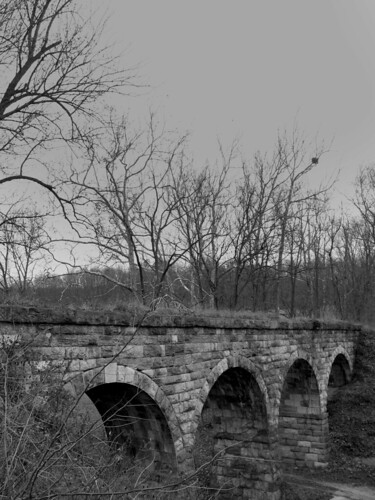
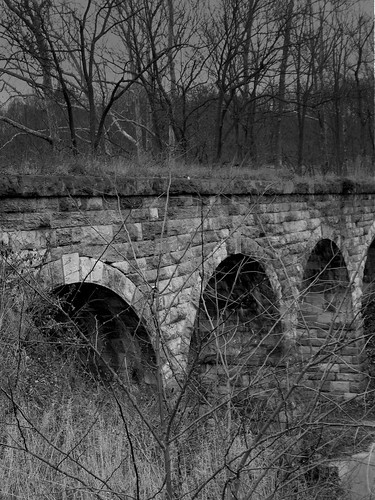
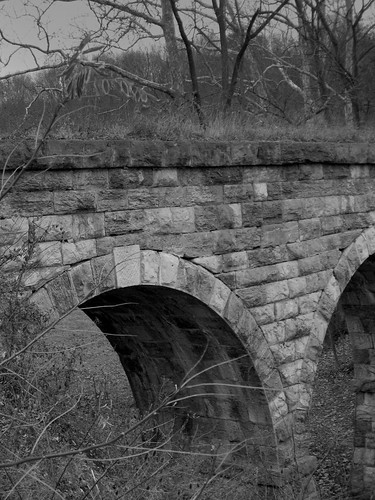
The Valley Railroad, a branch of the Baltimore and Ohio, once ran all the way to Lexington, Virginia crossing this fine stone bridge. Photos by Bob Kirchman.
Although American railroads became known for wooden trestles and iron bridges, it is worth noting that the engineers of the Baltimore and Ohio Railroad built fine stone bridges with smooth roman arches in the early days of the railroad. Two particularly fine examples are this bridge near Staunton, Virginia and the Thomas Viaduct on the road between Baltimore and Washington DC which still carries trains today.
The Thomas Viaduct spans the Patapsco River and Patapsco Valley between Relay and Elkridge, Maryland, USA. It was commissioned by the Baltimore and Ohio Railroad; built between July 4, 1833, and July 4, 1835; and named for Philip E. Thomas, the company's first president.
At its completion, the Thomas Viaduct was the largest bridge in the United States and the country's first multi-span masonry railroad bridge to be built on a curve. It remains the world's oldest multiple arched stone railroad bridge. In 1964, it was designated as a National Historic Landmark.
The viaduct is now owned and operated by CSX Transportation and still in use today, making it one of the oldest railroad bridges still in service.
This Roman-arch stone bridge is divided into eight spans. It was designed by Benjamin Henry Latrobe, II, then B and O's assistant engineer and later its chief engineer. The main design problem to overcome was that of constructing such a large bridge on a curve. The design called for several variations in span and pier widths between the opposite sides of the structure. This problem was solved by having the lateral pier faces laid out on radial lines, making the piers essentially wedge-shaped and fitted to the 4-degree curve.
The viaduct was built by John McCartney of Ohio, who received the contract after completing the Patterson Viaduct. Caspar Wever, the railroad's chief of construction, supervised the work.
The span of the viaduct is 612 feet (187 m) long; the individual arches are roughly 58 feet (18 m) in span, with a height of 59 feet (18 m) from the water level to the base of the rail. The width at the top of the spandrel wall copings is 26 feet 4 inches (8 m). The bridge is constructed using a rough-dressed Maryland granite ashlar from Patapsco River quarries, known as Woodstock granite.[6] A wooden-floored walkway built for pedestrian and railway employee use is four feet wide and supported by cast iron brackets and edged with ornamental cast iron railings. The viaduct contains 24,476 cubic yards (18,713 m3) of masonry and cost $142,236.51, an estimated $2,769,917.36 in 2007 dollars. [Wikipedia]
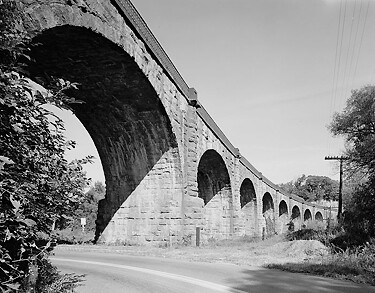
The Thomas Viaduct across the Patapsco River. Library of Congress Photo. [1.]
Riding Railroading's Romantic Beginnings
Wind Power on the Baltimore and Ohio Railroad
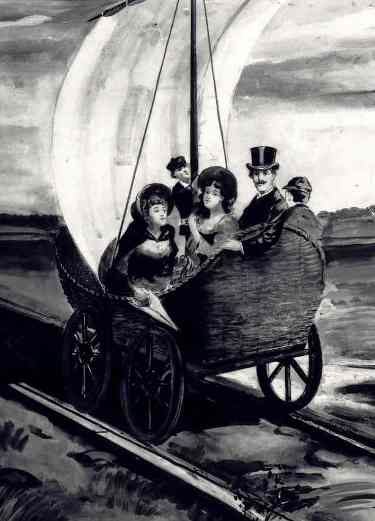
AEolus sails down the Baltimore and Ohio tracks. From the Collections of the B and O Railroad Museum, used with permission.
A recent CSX Transportation radio spot invites canines in cars to "ride the wind, doggies!" It is a reference to the open roads created by CSX trains taking freight off the highways and a doggie's desire to ride in a car with his head sticking out of the open window. Railroading's early days briefly offered another opportunity to "ride the wind" as a unique experiment in motive power took place on America's first operating rail line.
In the early days of the Baltimore and Ohio Railroad, the motive power was provided by horses. The carriages were pulled along the tracks by fine animals selected for this purpose. The building that housed stables and a blacksmith shop in Ellicott's Mills still stands. But horsepower would soon become a standard instead of a literal fact. Peter Cooper's small locomotive with its upright boiler would define the future of railroading. Still, there was a brief period in railroad history where passengers could literally ride the wind.
Evan Thomas of Baltimore constructed an experimental wicker car with a sail which he named the "AEolus." When there was enough wind blowing in direction to make it functional it was operated on the tracks between Baltimore and Ellicott's Mills.
The Russian Ambassador, Baron de Krudner came to observe the operationof the experimental car and actually handled the sail on the trip. He was presented by the President of the railroad with a model of the car. This led to an exchange of American engineers who helped construct Russia's rail system.
The demonstration of Cooper's steam locomotive set the direction for railroad operation. The Fourth Annual Report of the B and O Railroad in 1830 states:
Experience with regard to the celerity of the conveyance of passengers during the preceeding four months on the first 13 miles of the Baltimore and Ohio Railroad, is of the most cheerful and convincing character. The practicability of maintaining a speed of 10 miles per hour with horses has been exhibited. With proper relays,this rate of traveling may be continued through any length of railway, the ascent and descents of which shall not exceed about 30 feet per mile.
Within the last few months, the improvements to locomotive steam engines have been such as to insure their general use on all railways of suitable gradation, and where fuel is cheap." [2.]
Wood and coal would fuel the first boilers. Riding the train could be a dirty experience as smoke and cinders wreaked havoc on the wardrobes of female travelers. Clean coal was used and promoted by the New York Central in this little rhyme:
Says Phoebe Snow
about to go
upon a trip to Buffalo
"My gown stays white
from morn till night
Upon the Road of Anthracite"
The modern railroad saw the use of diesel and electric power. Welded rails and modern track alignment would finally create the illusion of a smooth and effortless glide down the tracks.
21st Century railroads would like to harness the energy of wind farms to power their catenaries [the overhead wires providing power to locomotives], but even now, as during the Nineteenth Century, the winds remain as fickle as they are romantic.
2. The early motive power of the Baltimore and Ohio railroad By Joseph Snowden Bell, p. 5.
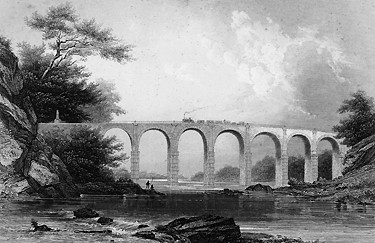
1858 Engraving of the Thomas Viaduct on the then Baltimore and Washington Railroad, a subsidiary of the Baltimore and Ohio.
Engraving from The United States Illustrated, Charles A. Dana, Editor, c. 1858. Retrieved from Historic American Engineering Record; Library of Congress [3.]
Viaduct of the Baltimore and Washington Railroad
from The United States Illustrated, Charles A. Dana, Editor, c. 1858
The traveler may well discern in the viaduct of a railroad, a monumental atonement on the part of surveyors and engineers for the injuries their labors elsewhere inflict upon the picturesque beauty of the landscape. Who has not hailed with delight, upon many a railway, the passage over some viaduct, and welcomed it amid the journey through dust and cinders, as the pilgrim over the African desert welcomes the oasis and its well of crystal water? Underneath, tons of smoothly hewn granite press deeply into the bed of the river, a whiff of whose cooling vapor, at least, comes into the passenger’s nostrils, as he dashes over a superstructure, the length of which would have been the admiration of the Romans, whose creek like Tiber might have provoked the sneer of a “go ahead” engineer.
The “Pons Narniensis,” whose framer was the imperial Augustus; the arches of Trajan over the Danube, and the bridge of Alcántara across the Spanish Tagus, have long been famous in ancient history, whilst America, for the accommodation of no imperial cortege, but of the masses of the people, has rivalled them all in her numerous railroad viaducts, and especially in the Starrucca Viaduct upon the Erie Railroad.
The one given in the engraving was of the first built in the country, although exceeded by the one above named in length, breadth, height, and the span of the arches, it is not surpassed for beauty of location and compactness of execution. But alas, by only one or two of the thousand passengers who rush along its surface, is this beauty and compactness noticed. Now and then a passenger drops off at the neighboring station, intent upon converting his walking staff into a fishing rod, beside the shadow of its arches, or about once in a twelvemonth a detention upon the neighboring “switch” allows the traveller a saunter by its railing, or a hurried clamber down the rocky ledge which confines the waters of the Patuxent (actually the Patapsco) River and in great part forms its bed.” [4.]
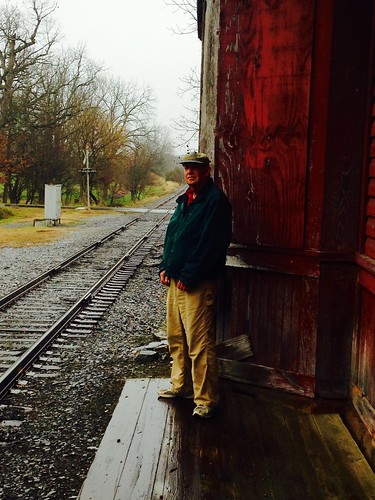
This station at Fort Defiance, Virginia once served the Baltimore and Ohio's Valley Railroad.

Bracket detail of Lexington, Virginia's Baltimore and Ohio Railroad Station, Built in 1883. Photo by Bob Kirchman.
Galaxies in Pansies
Photographs by Bob Kirchman
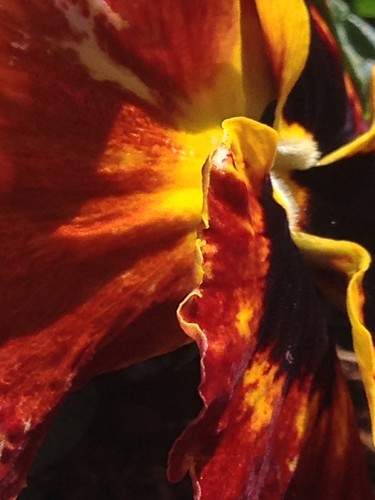


These close-up photographs capture the feeling of Hubble Telescope photographs from space. Photos by Bob Kirchman
The Holy Spirit Comes at Pentecost

Fresco of the pentecostal dove (representing Holy Spirit) at the Karlskirche in Vienna, Austria.
On the day Pentecost was being fulfilled, all the disciples were gathered in one place. Suddenly they heard the sound of a violent blast of wind rushing into the house from out of the heavenly realm. The roar of the wind was so overpowering it was all anyone could bear! Then all at once a pillar of fire appeared before their eyes. It separated into tongues of fire that engulfed each one of them. They were all filled and equipped with the Holy Spirit and were inspired to speak in tongues—empowered by the Spirit to speak in languages they had never learned! – Acts 2:1-4 The Passion Translation (TPT)
The Plane that Changed the World
Celebrating the DC-3

Dynamic Aviation in Bridgewater, Virginia owns this beautiful aircraft. Photo by Bob Kirchman.
